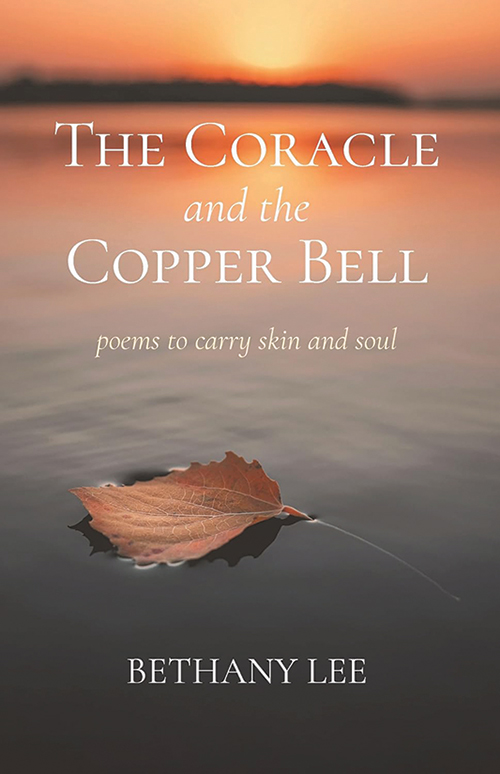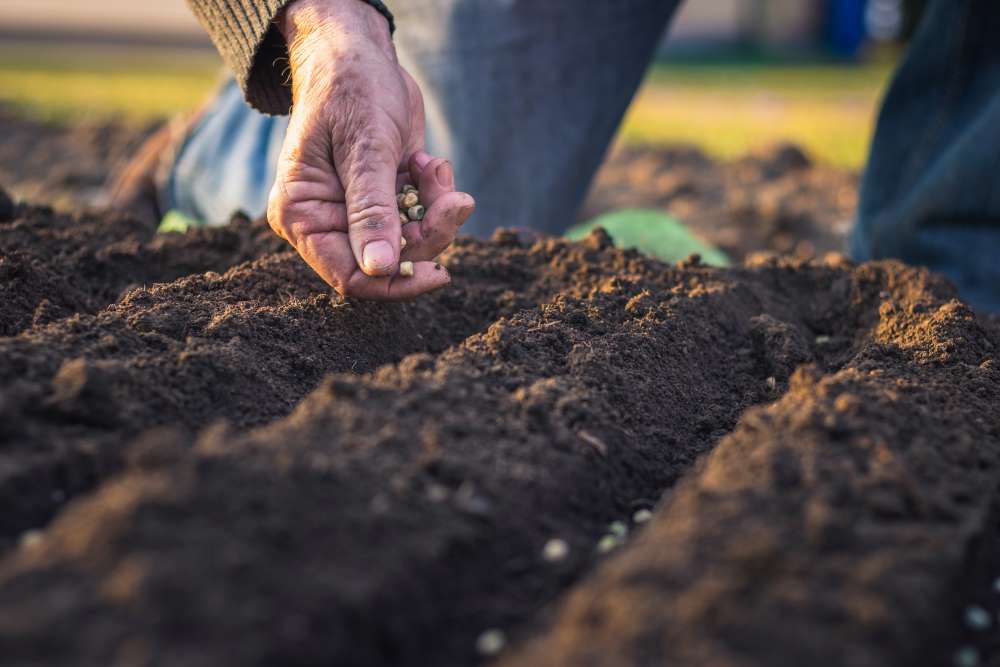
The Coracle and the Copper Bell: Poems to Carry Skin and Soul AND Close to the Surface: A Family Journey at Sea
Reviewed by Tom and Sandy Farley
August 1, 2025
By Bethany Lee. Fernwood Press, 2024. 156 pages. $19/paperback.

By Bethany Lee. Fernwood Press, 2024. 376 pages. $27/paperback.
Oregon’s Bethany Lee is a recorded Quaker minister, musician, and poet who has published three books of poetry. Her third is The Coracle and the Copper Bell. I (Sandy) found the poems in this collection refreshing and intriguing because of Lee’s creative use of language. In the opening poem, she builds an extended metaphor of constructing a coracle—a small boat of skin stretched over a frame—in which she can carry the joys and sorrows of her life, and how each morning requires more stretch to contain all that her life asks her to carry.
A nautical theme in some poems is not surprising since Lee is an accomplished sailor and dinghy builder, as recounted in her memoir Close to the Surface (see below), about a yearlong ocean sailing adventure. The three sections of The Coracle and the Copper Bell are aptly titled “Casting Off,” “Sea Change,” and “Becoming Home.” That last heading echoes the final line in the epilogue of Close to the Surface.
I catch my breath over some of the unexpected pictures she paints. From “The Courage to Go First”: “and yet you can’t help but leave wisdom behind you / hanging in the air like perfume.” And from “Still”: “I have held death in my arms / stumbled, am learning to walk / carrying it side by side with beauty.”
The natural world is a constant source of inspiration for those who pause, listen, accept, and try to put words to what they see and hear. Like many Friends, Lee shares a sense of sadness over the deterioration of earth’s environment and expresses it in several poems. Consider the first and last stanzas of an environmental lament, “Undoubtedly”:
Once, we could be certain
we certainly thought so anyway
The sun would keep rising
Spring would return again
The redwoods would outlive us all. . .
But we are awake now
left with no alternative
but to love in crimson
wonder about the end
of green, stay uncertain
and here for all of it
Lee’s faith is manifested in caring concern, humility, and advice on how to stay afloat. She describes agonies and burdens she bears. She calls us back to Spirit with the closing lines of “Just Enough Holy Kindness”: “we are all connected by suffering / open your ears / Your neighbor is weeping.”
The first two pages of Lee’s memoir, Close to the Surface, are detailed drawings of the sailboat LiLo (pronounced “Lie-Low, unless in Mexico, where folks say Lee-Low. She answers happily to either one.”), one exterior and one below deck. The next two pages display maps of LiLo’s voyage from the mouth of the Columbia River down the Pacific Coast to Puerto Vallarta and back. Looking at these, I (Tom) had hope for a grand sailing adventure; Close to the Surface is that and more. Lee tells the true story of how, starting in the fall of 2013, she, her husband, Bryan, and their two teenage daughters took nearly a year to sail the LiLo on that 4,000-mile voyage.
Each of the 35 chapters begins with location, month, moon phase, and a quotation—some from Lee’s own poems. Their journey is one of exploration, not a rush to get somewhere. In San Francisco Bay, they visited the Angel Island Immigration Station. Lee notes the discovery of poems written on the walls in Chinese by immigrants detained there. She reflects, “By unspoken agreement, we joined the silence of the site, trying in our small way to honor the pain and perseverance of those who had come here before us.” Yes, a moment of worship.
A family of four could get tired of each other, but they were not alone the whole time. They found themselves in the company of fellow seafarers and the people in harbors who serve them, together creating a community of mutual support spanning borders.
Some of their challenges were weather-related. Rough passages are recounted with excitement. One night off Baja California, their dinghy, which took them nine months to build, washed away; they built a new one in a week.
In the last chapter, Lee laments not being able to reflect on the full range of their joys and discoveries: “There is simply no way to capture the gift of spending these days side by side or the power of facing a challenge together and, together, accomplishing what we could not do alone.” But in the epilogue, she sums it all up in poetic ministry:
Once, our adventure was a tale to tell, places we had been, things we had done. In the telling, I learned: our lives are never just the story of what we have accomplished but of how we have unfurled. I no longer wonder if I can make it home. I am becoming home.
Sandy and Tom Farley are members of Palo Alto (Calif.) Meeting’s San Mateo Worship Group and coauthors of Earthcare for Children, which Sandy also illustrated. They are both teachers, storytellers, and booksellers.



Comments on Friendsjournal.org may be used in the Forum of the print magazine and may be edited for length and clarity.